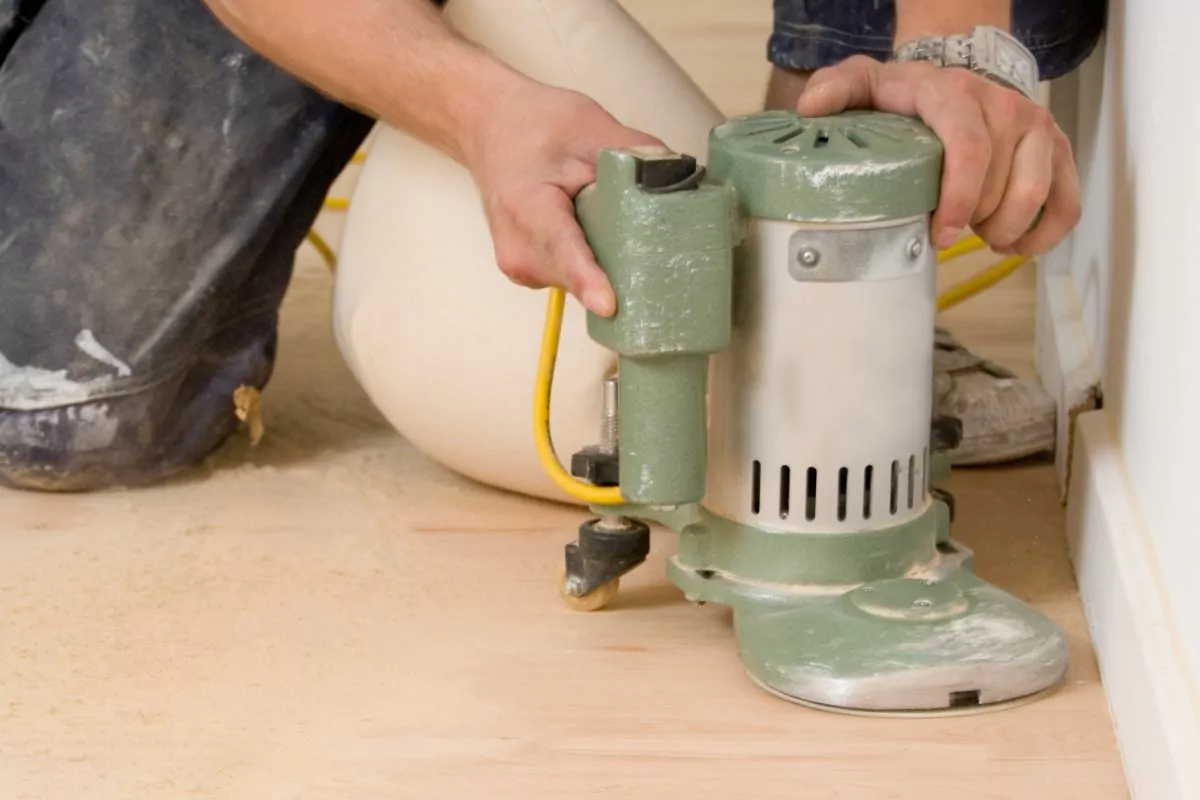Hardwood is renowned for being durable and long-lasting. But, even the very best hardwood flooring can get damaged over time.
As the name suggests, this type of wood is typically resistant to wear and tear due to its hardness and toughness.

But, when you compare it to some other materials, such as tiles and stones, it is relatively soft.
Over a period of time, hardwood can suffer from scratches, discoloration, and gouges, small or large.
While all this is inevitable, especially if the hardwood is in a busy traffic area, like a home’s hallway, there are methods of bringing back its former glory.
For old, worn hardwood, you can refinish and repair it. If there are a few minor scratches on its surface, you can simply repair the damage.
But, if the scratches or gouges are deep and large, you may need to refinish the floor completely.
The cost of repairing and refinishing is usually determined by the condition of the hardwood itself, the type of wood it is, and how large the damaged area is.
As you can imagine, refinishing an entire hardwood floor is a much bigger job than simply repairing a few marks here and there.
Refinishing hardwood usually requires you to sand it down and then use some sort of finishing product on its surface. This can also come with unwanted dust and toxic odors.
If your hardwood has reached the time to be repaired or refinished, you may be wondering what to do next.
Well, in today’s post, we are going to show you how to repair and refinish hardwood to make it look like new again.
How To Repair Hardwood?
The steps to repairing hardwood depend on the type of damage it has sustained. If the wood is scratched, you will need to repair it differently if it suffered water damage.
Let’s take a look at the various methods below.
Hardwood Scratch Repair
If your hardwood floor has some minor scratches, you can buff it away with some steel wool or hand sand it with different grades of sandpaper grits.
The more you sand, the finer these grits should become. When you need to sand hardwood, only focus on the damaged area and slightly around that part of the surface.
Furthermore, ensure you always sand in the direction of the wood’s grain.
If your hardwood has a polyurethane finish, you may need to dip a scouring brush in mineral spirits first or use a sanding screen.
Never wax a floor that has a polyurethane finish on it as it will be impossible to re-coat it in the future without having to sand it first.
Paste wax can be used to hide scratches on some hardwood surfaces.
This type of wax is available in many tones to match hardwood, such as honey, and brown. Some are also clear and help to fill in deeper dents and scratches.
Hardwood Water Damage Repair
Water damage to hardwood is never good. It tends to damage the finish and can discolor the surface, leaving rings.
In the worst cases, water damage can result in the hardwood buckling, warping, or even starting to grow mold.
The ways to fix water-damaged hardwood vary depending on the severity of the damage.
If the damage is severe, hardwood flooring may need to be replaced, which can be costly and difficult when trying to find matching hardwood pieces.
If there is a watermark stain or ring, you may be able to remove it with a cloth or old rag. Place a white rag over the damaged spot and put an iron (on medium heat) on top.
Go back and forth and gradually check to see if the stain starts to vanish. If a stain is large, you usually need to sand it down and even bleach it before refinishing the whole floor.
We recommend hiring an experienced floor contractor if the water damage is substantial. However, you can try it yourself using the following steps:
- Sand the damaged area with a sander (start with 100-grit sandpaper and move on to 150-grit.)
- Wipe the spot with mineral spirits if it’s an oil-based stain and with water if it’s from latex.
- If the stain is dark, apply some bleach or oxalic acid. This should lighten the stain. Then, lightly sand the area with 150-grit sandpaper.
If you need to replace the damaged wood and can’t find the exact same type, you can cut it from another inconspicuous part of the hardwood and use it to match the correct measurements.
In Summary
Hardwood can get damaged, whether it’s because of its age or via certain accidents.
But, there is no need to despair if your beloved hardwood flooring has been scratched, suffered water damage, or had a chunk taken out of it.
There are various methods to repair hardwood and refinish it, so you can return it to its former glory.
The extent of the damage usually determines the cost and degree of repair required but, for minor scratches, you should be able to fix the damage yourself.
- How To Drill Into Brick? - October 31, 2022
- How To Repair And Refinish Hardwood? - October 31, 2022
- Floetrol – What Is It? When To Use It: Complete Guide - October 31, 2022
